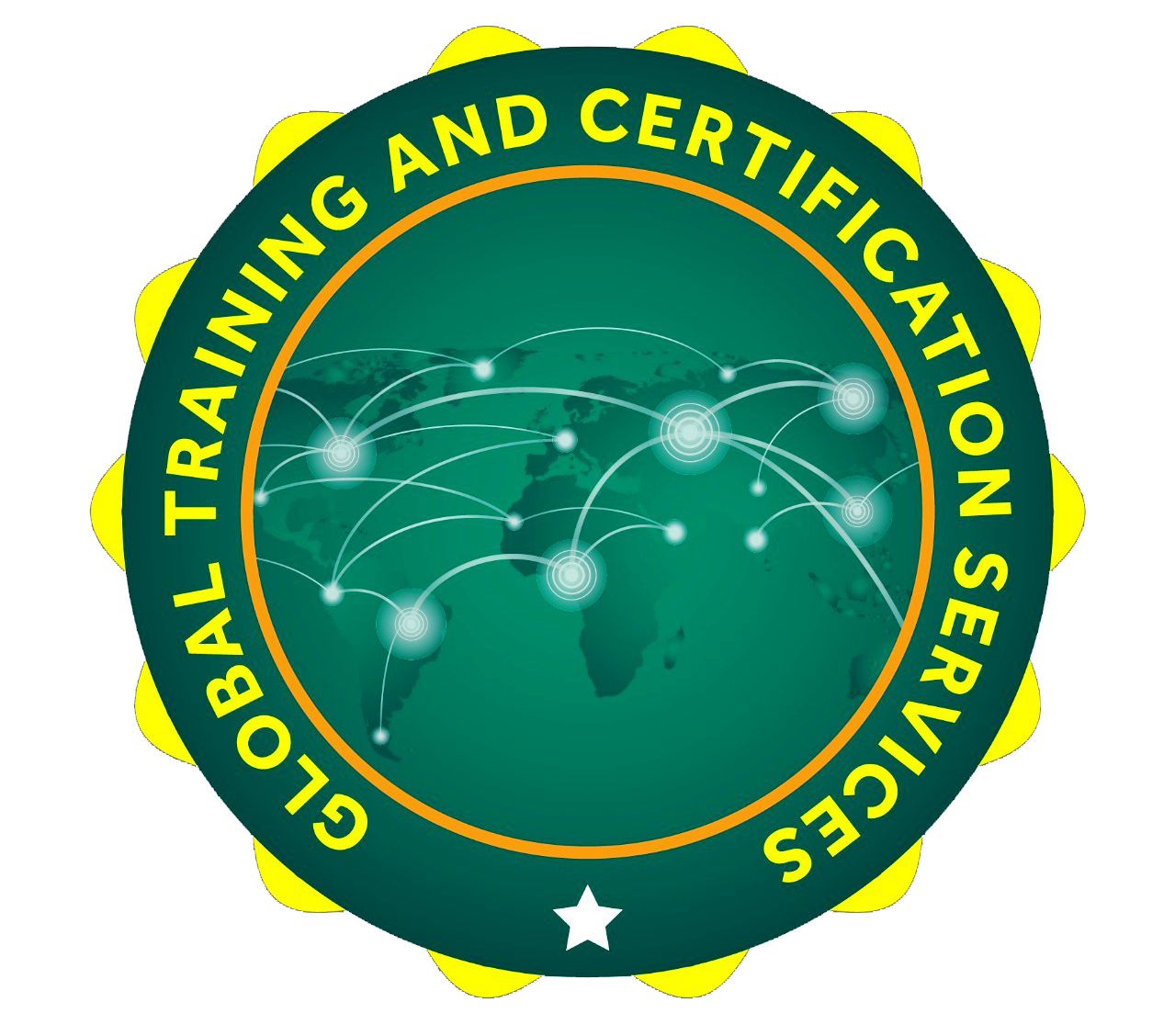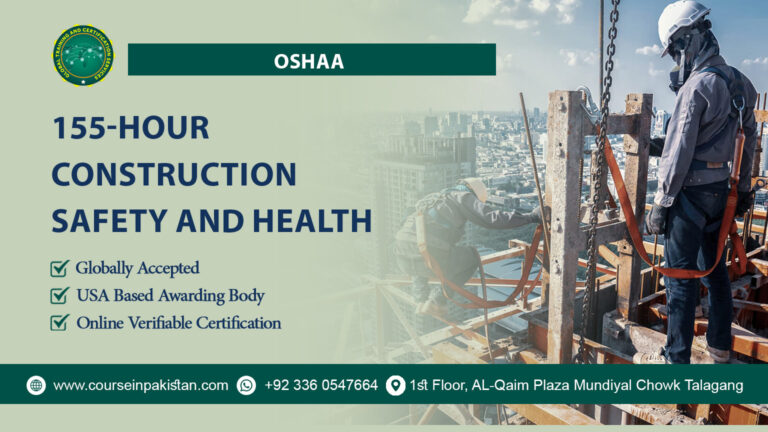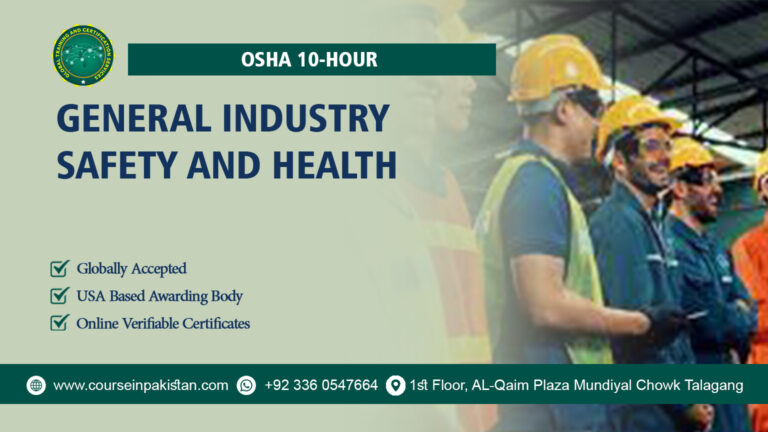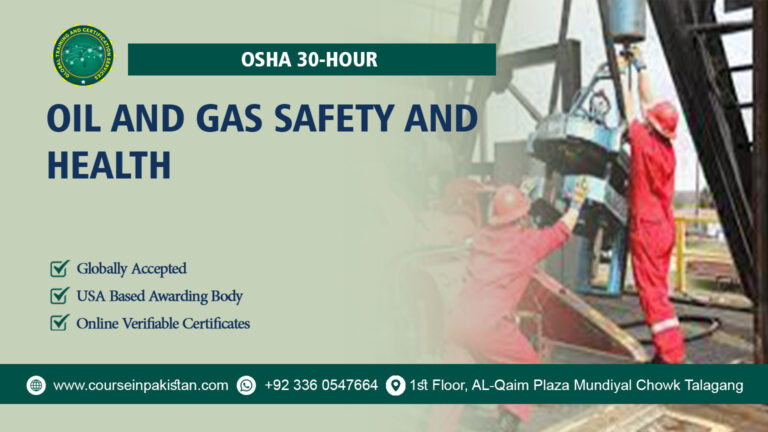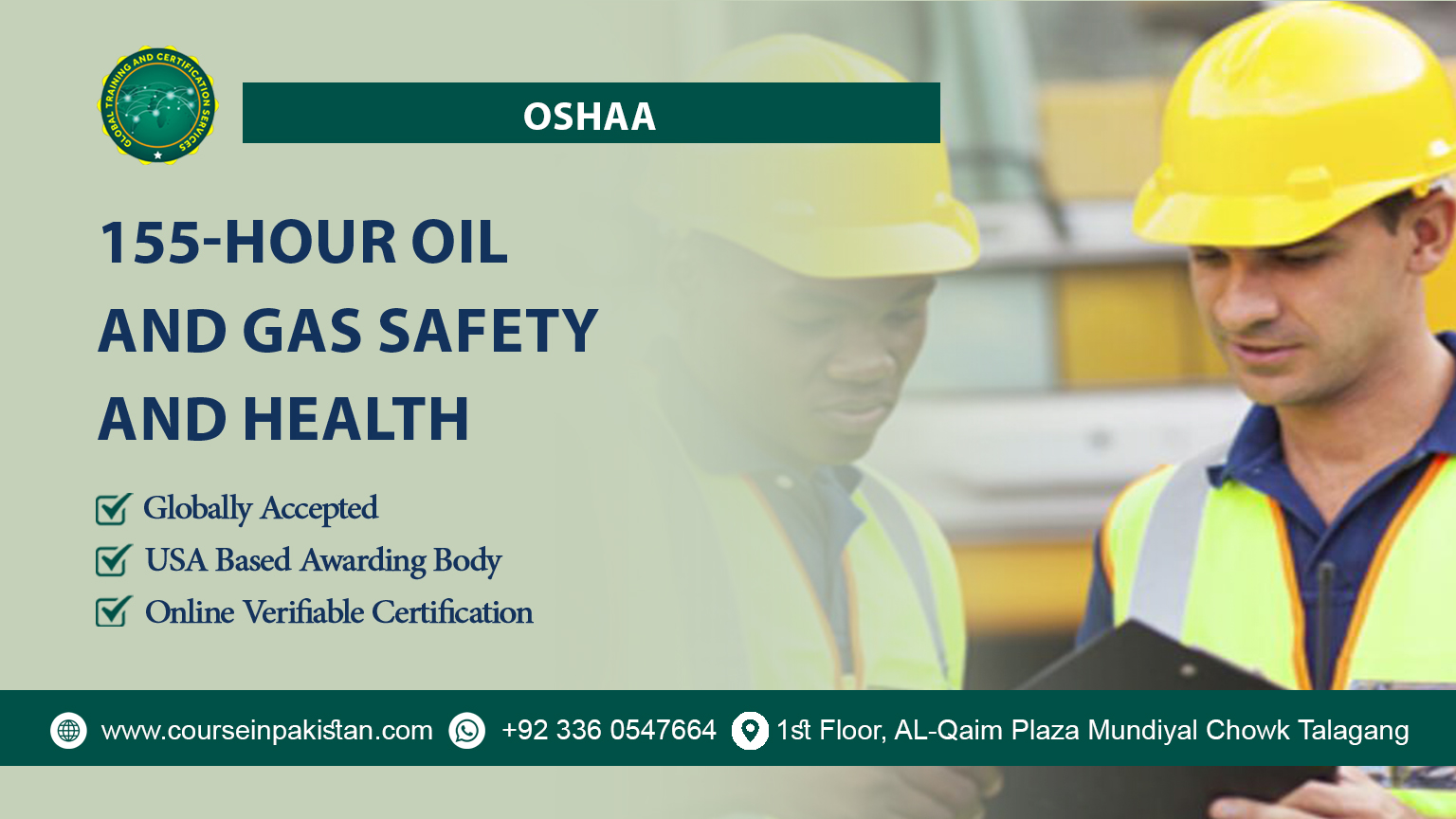
OSHA 155-Hour Oil and Gas Safety and Health
Welcome to the OSHA 155-Hour Oil and Gas Safety and Health Course, designed specifically for professionals working in the oil and gas industry. This specialized course provides an in-depth understanding of OSHA regulations, safety protocols, and best practices tailored to the unique hazards and challenges of the oil and gas sector. Whether you’re a safety manager, field supervisor, or just starting your career in oil and gas safety, this course equips you with the essential knowledge to ensure compliance and protect workers in one of the most hazardous industries in the world.
Course Overview:
The OSHA 155-Hour Oil and Gas Safety and Health Course is a comprehensive training program that focuses on OSHA’s safety standards and regulations specific to the oil and gas industry. Throughout the course, you’ll gain an understanding of critical safety measures for oil rigs, refineries, and natural gas facilities, as well as the skills needed to mitigate risks and protect workers from industry-specific hazards. The course combines theoretical learning with practical safety applications, preparing you to effectively manage safety protocols, conduct risk assessments, and respond to emergencies.
This 155-hour course is perfect for professionals looking to improve their qualifications or gain new skills in managing workplace safety in the oil and gas industry. The course will help you understand and implement OSHA regulations in various operational settings, from drilling sites to processing plants, and ensure compliance with federal safety standards.
Course Benefits:
- In-Depth Knowledge of Oil and Gas Safety: Learn the specific OSHA regulations and safety practices that apply to the oil and gas industry, helping you reduce risk and enhance workplace safety.
- Career Advancement Opportunities: Completing this course boosts your qualifications and positions you for career advancement in oil and gas safety, health, and compliance roles.
- Risk Mitigation Skills: Understand how to identify, assess, and control the unique hazards associated with oil and gas operations, including exposure to toxic chemicals, fire hazards, and equipment failures.
- Compliance Expertise: Equip yourself with the knowledge to ensure your organization meets OSHA’s stringent safety requirements, helping to avoid penalties and fines.
- Professional Certification: Upon successful completion, you will receive a certification that demonstrates your competency in oil and gas safety and OSHA regulations, making you a valuable asset to employers.
Course Learning Outcomes:
By the end of the OSHA 155-Hour Oil and Gas Safety and Health Course, participants will:
- Master OSHA Regulations for Oil and Gas Industry: Understand OSHA’s general and specific regulations for the oil and gas industry, including compliance strategies and enforcement mechanisms.
- Identify and Mitigate Hazards: Be able to recognize and evaluate workplace hazards in the oil and gas sector, including environmental, chemical, and mechanical risks, and apply controls to mitigate these risks.
- Develop and Implement Safety Programs: Gain the skills to design, implement, and manage safety programs and procedures specifically tailored to the oil and gas industry, ensuring workers’ health and safety.
- Understand Emergency Response and Preparedness: Learn how to prepare for and respond to common emergencies in the oil and gas industry, including fires, explosions, spills, and equipment failures.
- Conduct Safety Audits and Inspections: Be able to carry out safety inspections, audits, and assessments to ensure compliance with OSHA regulations, as well as effectively manage safety resources and documentation.
- Promote a Safety Culture: Develop the ability to foster a safety-conscious culture within oil and gas organizations, ensuring that all employees are trained, informed, and aware of safety best practices.
Study Units:
- Introduction to OSHA and Oil and Gas Safety Standards (10 Hours)
- Hazard Identification and Risk Management (15 Hours)
- Personal Protective Equipment (PPE) and Safety Gear (10 Hours)
- Fire and Explosion Prevention and Response (15 Hours)
- Hazard Communication and Chemical Safety (HAZCOM) (15 Hours)
- Environmental Protection and Spill Management (15 Hours)
- Emergency Preparedness and Response (15 Hours)
- Workplace Safety Practices and Procedures (15 Hours)
- Offshore and Remote Worksite Safety (15 Hours)
- Incident Reporting and Investigation (10 Hours)
- Contractor Safety and Multi-Employer Worksites (10 Hours)
- Safety Auditing and Continuous Improvement (10 Hours)
Future Progression:
Upon completing the OSHA 155-Hour Oil and Gas Safety and Health Course, you will be well-prepared to take on more advanced safety certifications and further your career in oil and gas safety management. Some potential future career paths include:
- Certified Safety Professional (CSP): As a CSP, you will advance to a higher level of safety management, with an emphasis on analyzing and managing safety risks across multiple industries.
- Oil and Gas Safety Manager: Transition into a leadership role where you oversee safety practices across oil and gas operations, ensuring compliance with safety standards and regulatory requirements.
- Environmental Health and Safety (EHS) Manager: Take responsibility for managing both health and environmental safety programs, ensuring that oil and gas operations comply with environmental regulations and minimize environmental impact.
- HSE Consultant (Health, Safety, and Environmental): Work as an external consultant for oil and gas companies, helping them develop, implement, and manage safety programs to ensure compliance with OSHA and environmental standards.
- Advanced Certifications in Oil and Gas Safety: You may choose to pursue additional industry-specific certifications, such as those offered by the International Association of Drilling Contractors (IADC) or the Board of Certified Safety Professionals (BCSP), to deepen your expertise.
- Emergency Response Coordinator: As an emergency response expert, you’ll work within oil and gas companies to develop and implement emergency preparedness plans for potential safety incidents.
The OSHA 155-Hour Oil and Gas Safety and Health Course is an essential program for anyone looking to enhance their knowledge of safety regulations and practices in the oil and gas industry. With a curriculum focused on hazard identification, risk management, compliance, and emergency response, this course provides the essential tools needed to create safer, more compliant oil and gas operations. Whether you’re advancing your career or entering the field for the first time, this course will equip you with the expertise to manage safety effectively.
